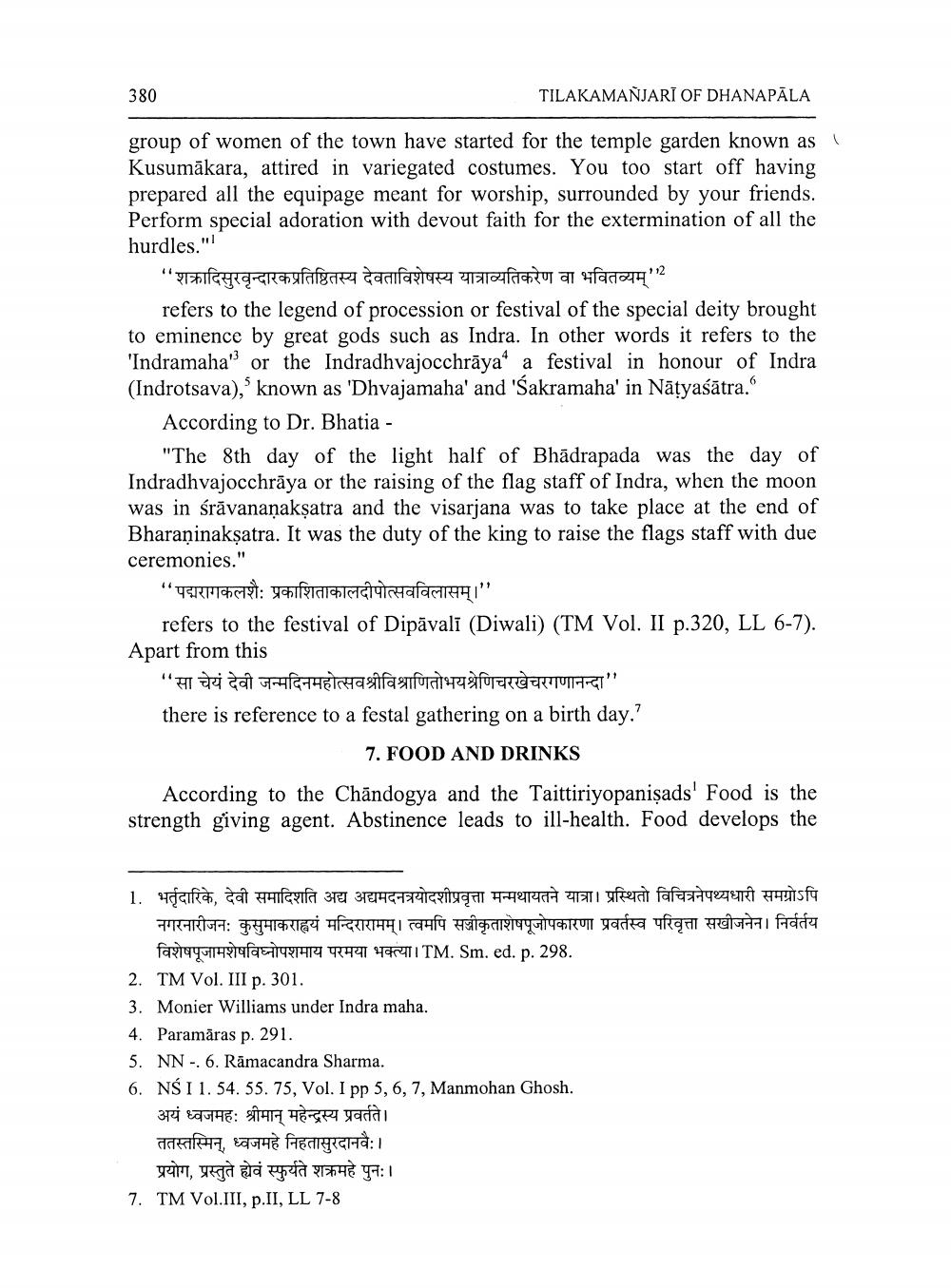________________
TILAKAMANJARĪ OF DHANAPĀLA
\
group of women of the town have started for the temple garden known as Kusumākara, attired in variegated costumes. You too start off having prepared all the equipage meant for worship, surrounded by your friends. Perform special adoration with devout faith for the extermination of all the hurdles."
" शक्रादिसुरवृन्दारकप्रतिष्ठितस्य देवताविशेषस्य यात्राव्यतिकरेण वा भवितव्यम्
380
refers to the legend of procession or festival of the special deity brought to eminence by great gods such as Indra. In other words it refers to the 'Indramaha' or the Indradhvajocchraya a festival in honour of Indra (Indrotsava), known as 'Dhvajamaha' and 'Śakramaha' in Natyaśātra."
According to Dr. Bhatia -
12
"The 8th day of the light half of Bhadrapada was the day of Indradhvajocchraya or the raising of the flag staff of Indra, when the moon was in śrāvanaṇakṣatra and the visarjana was to take place at the end of Bharaninakṣatra. It was the duty of the king to raise the flags staff with due ceremonies."
“पद्मरागकलशैः प्रकाशिताकालदीपोत्सवविलासम् । "
refers to the festival of Dipāvalī (Diwali) (TM Vol. II p.320, LL 6-7). Apart from this
" सा चेयं देवी जन्मदिनमहोत्सव श्रीविश्राणितोभय श्रेणिचरखेचरगणानन्दा"
there is reference to a festal gathering on a birth day."
7. FOOD AND DRINKS
According to the Chandogya and the Taittiriyopaniṣads' Food is the strength giving agent. Abstinence leads to ill-health. Food develops the
1. भर्तृदारिके, देवी समादिशति अद्य अद्यमदनत्रयोदशीप्रवृत्ता मन्मथायतने यात्रा । प्रस्थितो विचित्रनेपथ्यधारी समग्रोऽपि नगरनारीजनः कुसुमाकराह्वयं मन्दिरारामम्। त्वमपि सज्जीकृताशेषपूजोपकारणा प्रवर्तस्व परिवृत्ता सखीजनेन । निर्वर्तय विशेषपूजामशेषविघ्नोपशमाय परमया भक्त्या । TM. Smed. p. 298.
2. TM Vol. III p. 301.
3. Monier Williams under Indra maha.
4. Paramāras p. 291.
5. NN. 6. Rāmacandra Sharma.
6. NSI 1. 54. 55. 75, Vol. I pp 5, 6, 7, Manmohan Ghosh.
अयं ध्वजमहः श्रीमान् महेन्द्रस्य प्रवर्तते ।
ततस्तस्मिन्, ध्वजमहे निहतासुरदानवैः । प्रयोग, प्रस्तुते ह्येवं स्फुर्यते शक्रमहे पुनः ।
7. TM Vol.III, p.II, LL 7-8




